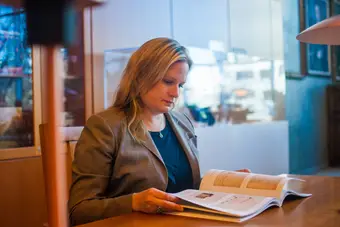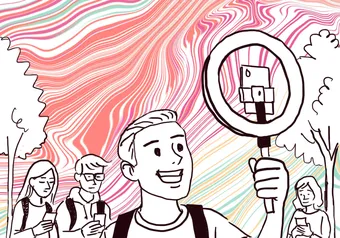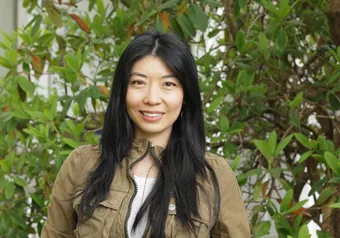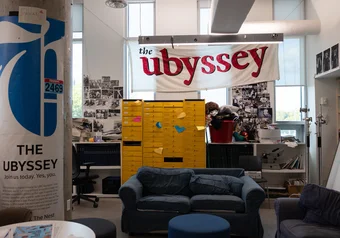Visiting the Rare Books and Special Collections at UBC can be an intimidating process. As you enter the office in the basement of the Irving K. Barber Learning Centre, you are first directed to sanitize your hands. Then you trade your student card for a locker key — you aren’t allowed to bring any coats or jackets inside.
“We tend to be regarded as a scary place to visit,” admitted Katherine Kalsbeek, acting head of the Rare Books and Special Collections (RBSC).
This fall however, the RBSC got some long awaited attention with the “Harry Potter at UBC” project. The RBSC had acquired the first editions of the Potter series in Canada, America and Britain. The occasion was marked by a discussion on the influence of Harry Potter on Vancouver, an ongoing exhibition in various libraries across campus and even a Potter-themed Halloween party in Irving. Kalsbeek was at the centre of it all.
“Harry Potter is much loved, regardless of what department or faculty you’re in on campus,” said Kalsbeek, noting how students and administrators across departments connected through the exhibition and Potter-themed parties for staff and students. Celebrating the arrival of the Harry Potter collection became an opportunity to introduce rare books to people in a non-threatening way. Kalsbeek hopes to encourage more people to use the collection.
Kalsbeek’s job extends much further than organizing events for Potterheads though — she is in charge of the university’s entire collection of rare and special books, from unique historical Chinese books to newly discovered Greek papyri. “Anything you could think of we probably have some sort of example,” said Kalsbeek of UBC’s extensive selection of books and archives.
“A rare book doesn’t necessarily have to be an old book, but it has to be a book that may be difficult to locate,” Kalsbeek explained. For example, the first book Kalsbeek added to the collection was a children’s book from the early 1900s — Uncle Jim’s Canadian Nursery Rhymes. According to Kalsbeek, it is the first Canadian book of nursery rhymes, but only a few copies are known to exist.
“I’ve tried to think really strategically in the past year about how we build the collections and how we enhance the current collections that we have here,” said Kalsbeek, adding that her role involves working closely with faculty from the English, history and Asian studies departments as well as potential donors.
“The books that I really appreciate are the books that I somehow helped to bring here,” said Kalsbeek. “Any collection that I’ve really been integral to ... there’s always sort of a special relationship.”
In addition to working to expand UBC’s collection of rare books, Kalsbeek is responsible for preserving the existing relics held in the Irving basement under the right conditions. “I’m the person who needs to make sure that, for example, in the vault, the humidity and temperature are under control and we’re providing a safe, secure environment for the material,” she said.
Kalsbeek is now working on bringing the first British edition of Harry Potter and the Philosopher’s Stone, a book that, according to Kalsbeek, would usually sell for around $40,000. However, not all of the new books that Kalsbeek acquires come from large sales like this. More often, Kalsbeek convinces book owners to donate to UBC — Uncle Jim’s Canadian Nursery Rhymes came from the attic of a woman in New Jersey. “She was just somebody in New Jersey who happened to find it in her attic. I had to make the case to her for why that book should come to Canada,” Kalsbeek recalled.
“I love my job,” Kalsbeek said, pointing to her passion for researching, working and learning from others. “I get to work with many experts and those people are very generous in sharing their expertise with me and teaching me about the materials we have.”
Kalsbeek concentrates on supporting the faculty’s teaching and enhancing the learning experience of students. But providing that secure — almost sacred — space for the rare collections is of great consequence to her.
“Long term, making sure that these materials are cared for and looked after so that students 100 years from now still have access to that material — that, to me, is a huge responsibility,” she said.
Correction: A previous version of this article incorrectly stated that the first Canadian children’s book was from the 1990s. It is from the early 1900s. The Ubyssey regrets this error.
First online
Share this article








